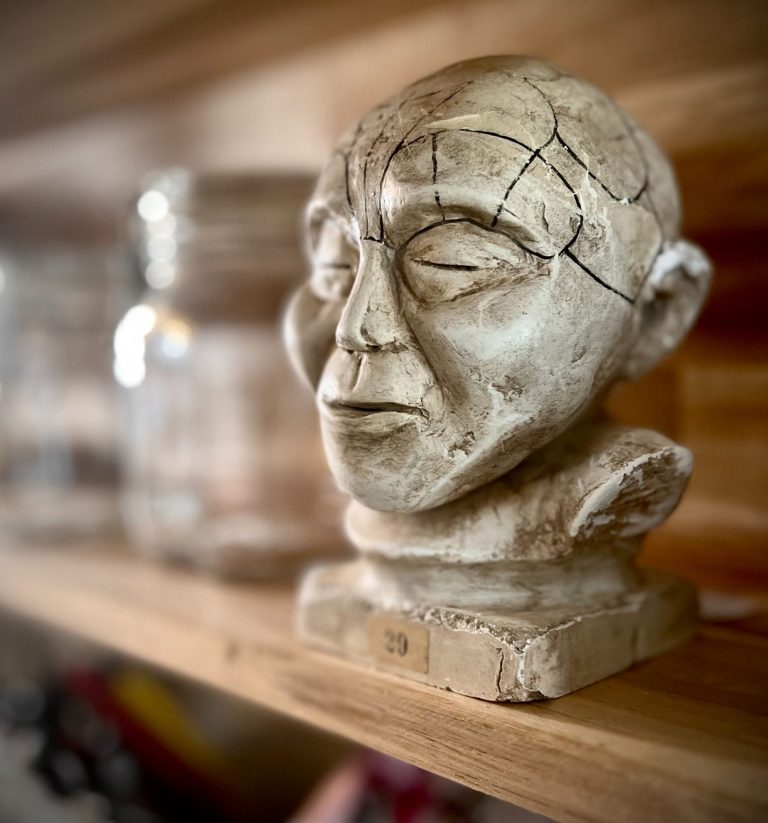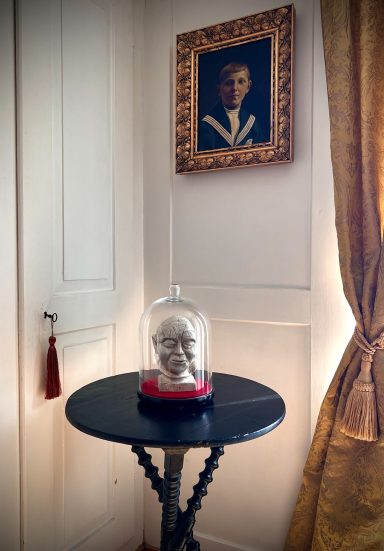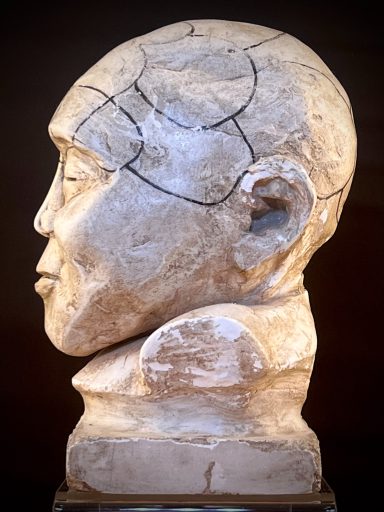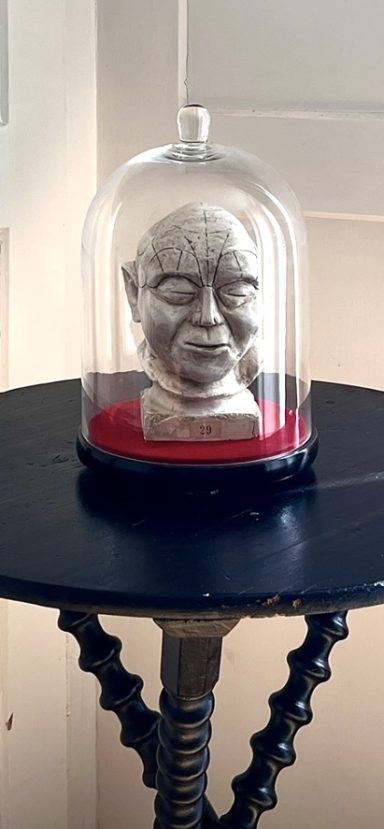Late 19th c. phrenology plaster head with cranial divisions
CHF 420
A rare and expressive late 19th-century plaster bust, crafted in line with the now-discredited but historically fascinating pseudoscience of phrenology. The head features incised regional divisions mapped to mental traits, consistent with 19th-century academic models. This particular example shows mild cranial deformities and is numbered “29” — likely indicating it was part of a teaching series or institutional collection used in psychological or anatomical study.
Phrenology was developed by Viennese physician Franz Joseph Gall in the late 18th century and was originally called "Schädellehre" – literally "the doctrine of the skull." The theory proposed that bumps and shapes on the skull reflected inner character and intellect. While now considered a pseudoscience, it contributed to early ideas about brain localization and remains a fascinating chapter in the history of medicine.
The bust shows age-related wear and sits under a later-added glass dome with an ebonised wooden base — ready to be admired as a medical oddity, historical talking point, or simply a brilliantly bizarre decorative object.
You rarely see one like this on the market — expressive, numbered, and display-ready.
Origin: Sourced in France, origin unknown
Artist / Attribution: Unknown
Year / Period: Late 19th century (bust); 20th century (glass dome and base)
Materials: Plaster, pigment, glass dome, wood base
Features:
Cranial divisions etched according to phrenological theory
Distinctively shaped head with stylised features
Later-added display dome with ebonised wooden base
Historically tied to the now-disproven theory of “Schädellehre”
Marks / Signatures: None
Condition: Plaster bust shows wear and minor damage consistent with age. Glass dome and base are in very good condition.
Measurements:
Bust: approx. 17 cm tall, base 9 × 9 cm
Dome incl. base: approx. 25 cm high, 19 cm diameter

Wir benötigen Ihre Zustimmung zum Laden der Übersetzungen
Wir nutzen einen Drittanbieter-Service, um den Inhalt der Website zu übersetzen, der möglicherweise Daten über Ihre Aktivitäten sammelt. Bitte überprüfen Sie die Details in der Datenschutzerklärung und akzeptieren Sie den Dienst, um die Übersetzungen zu sehen.









